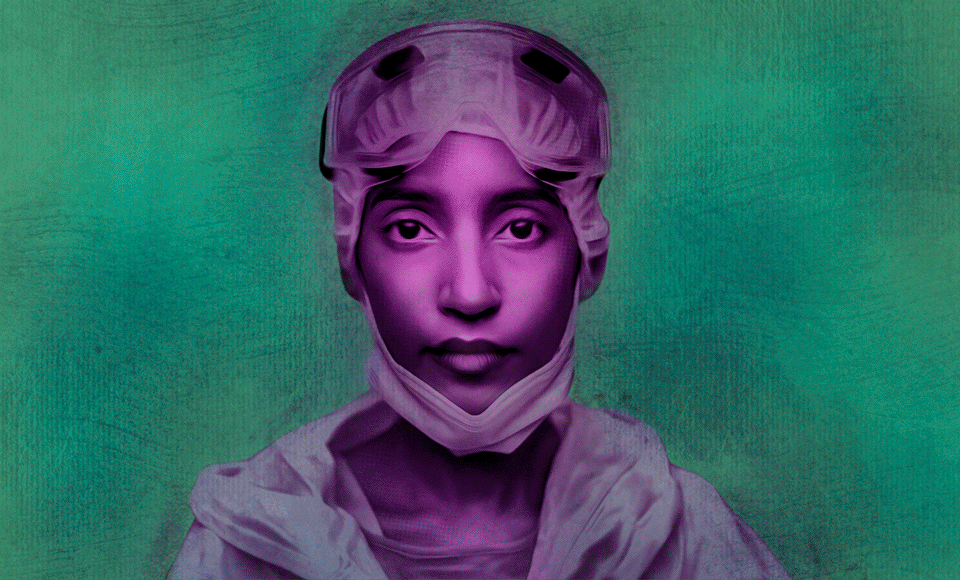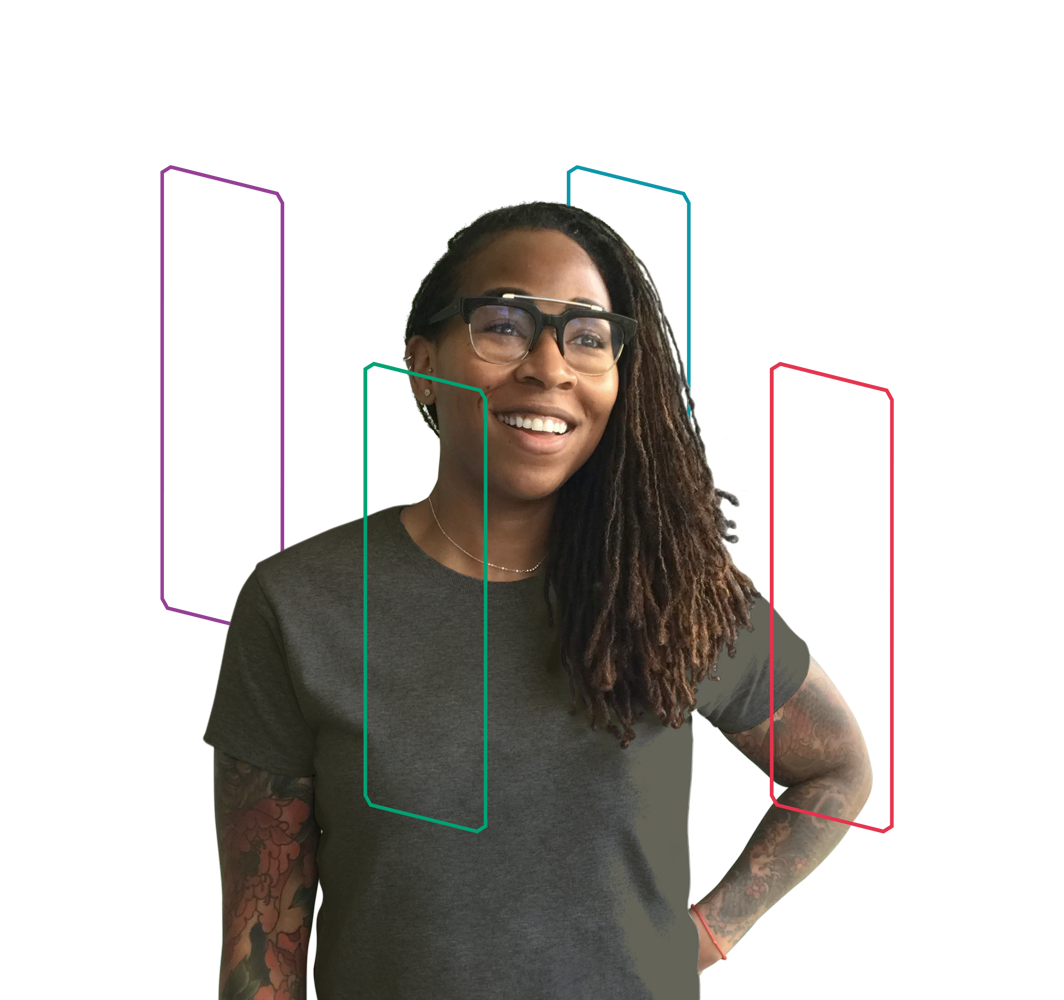Are you a skimmer?
No problem, we’ve got you! Take a spin through the list of interview highlights below, complete with timestamps to skip straight to the episode content that’s most relevant to you.
Introduction
So many nurses felt compelled to answer calls to the moment during COVID-19. What’s interesting about Stacy’s story is how she answered that call.
Stacy helped stand up a COVID-19 field hospital in Boston’s downtown convention center. In less than two weeks, she and her team built a space with 1,000 beds. Boston Hope increased capacity and created a recovery space for COVID-19 patients who couldn’t isolate safely at home or who were experiencing homelessness.
With two decades of experience as a nurse, Stacy already had a lot of insight into health inequities. But Boston Hope showed her exactly how fast community needs can be met when providers, policymakers, and public health officials collaborate.
And that’s exactly what it’s going to take, she tells us, to make a lasting impact on health. But how can nurses create a shift on issues highlighted during the height of COVID-19? Well, that’s exactly what we’ll be talking about the rest of the season. We have a dynamic lineup of SHIFT Talkers who provide actionable insights across care settings — so hit “subscribe” and tune in.
Interview Highlights
(5:00)
Stacy on how she first started learning about the impact of social determinants of health: “As a staff nurse, I was responsible for helping patients understand their chronic diseases … And it was really the patients who started educating me about concepts like food deserts.”
Stacy began her career as many nurses do — at the bedside, a position where she had meaningful, and also educational, conversations with her patients. Her time on medical units at Brigham and Women’s Hospital (“The Brigham”) and Massachusetts General Hospital (“Mass General”) changed the way she viewed her responsibilities as a caregiver. She realized she had to look beyond what she’d learned in nursing school and consider the social factors, not just the clinical, that were impacting her patients’ health. Things like their ZIP codes, education and jobs; their ability to actually get the fresh, healthy foods she recommended (not happening in a food desert!) and their access to transportation to get to appointments all made a difference.
(7:50)
Stacy on the importance of coming to patient encounters with an open mind: “The caring that you show as a clinician to ask those questions, like, ‘Help me understand the why,’ unpacks a whole different set of implications.”
Over time, Stacy realized that patients’ care plans were only as good as their ability to follow them. To figure out if they could, she had to ask questions. Stacy realized it was part of her responsibility as an acute care practitioner to know about and help patients access resources in their communities to help address issues stemming from health disparities.
(8:30)
Stacy shares the importance of meeting patients where they are: “If our patients are struggling with those social determinants that are the very basic of human needs like housing and food insecurity—being able to get to an endocrinologist? I mean, that is just a very high-level need… just ask ‘What’s going on?’ Because then we can go about solving those challenges and barriers our patients are encountering. And meet them where they are. This plan of care might need to be adapted to be more realistic as to what you’re going to be able to execute on.”
Stacy always had a passion for leadership, and after ascending the ranks in the hospital setting, she eventually accepted a role at Atrius Health, a multispecialty ambulatory practice in the Boston area. At this point in the episode (9:00), Stacy talks with Nacole about how SHIFTed things – and made changes the practice put in place to address social factors. They were things as simple — but impactful — as offering appointments in the evenings and on weekends. It was about making the system adaptable to the patient’s needs, Stacy says.
(12:20)
Stacy explains how she pivoted from outpatient into a critical role on the front lines of the COVID-19 pandemic: “Most of my career to that date had been in the acute care environment and academic medical centers, and I really felt the desire to help in some way … And it was at that time that I started having internal conversations at Atrius Health, really starting to convey this desire – this passion — I had to be part of the response to COVID.”
When Atrius Health essentially shut down early in the pandemic, Stacy couldn’t just sit on the sidelines. (Feel familiar, SHIFT Talkers? We’re sure many of you felt the same.) She heard that Jeanette Ives Erickson, a former colleague from her days at Mass General, was working with the state, the City of Boston and Boston Health Care for the Homeless to stand up a field hospital in the convention center downtown. All it took was a single phone call to Jeanette, and Stacy was suddenly the new chief nursing officer — for a field hospital that wasn’t even finished being built! We loved hearing that Atrius Health fully supported Stacy and gave its blessing for her to help stand up Boston Hope.
(15:20)
Stacy tells us about the incredible effort that was Boston Hope, from the needs the field hospital addressed to the patients it served: “It was really set up to decompress the hospitals as people became less acute in their health care needs. It was licensed at an LTAC [long-term acute care] level, so it was really a subacute facility. Our patients there were still requiring some monitoring. So some needed help with activities of daily living, but they were not at the acuity level where they required inpatient hospitalization.”
Boston Hope was built in just under two weeks. (Yes, you read that right, SHIFT Talkers, but is it really a surprise, now that you know nurses took the lead?) Stacy shares the many problems Boston Hope was trying to solve, including capacity issues from the surrounding hospitals and providing a safe place for patients — who either needed limited medical help or couldn’t quarantine safely at home. This was often because there were four or five people jammed into a tiny downtown apartment (another example of how housing is a key social determinant of health).
(18:48)
Stacy also explains that Hope had a whole other side to manage the homeless population: “Boston Hope was a thousand-bed facility, and half of it was the subacute hospital side … the other 500 beds were managed by the leadership from Boston Health Care for the Homeless.”
A May 2020 Lancet study reported that, when tested, 36 percent of individuals residing in a shelter were positive for COVID-19. That helps provide context for just how important these 500 beds were. Patients didn’t have to need medical attention to snag a spot on this side of the hospital. In fact, Boston Hope’s unhoused patients typically had no active COVID symptoms or just mild ones. This was really an effort aimed at protecting a disadvantaged population and stopping the spread of the virus in the community. On top of that, during their stays at Boston Hope, these patients had access to group therapy and help managing their chronic health conditions. If their symptoms did worsen, they could easily transfer to Stacy’s side of the hospital.
(21:18)
But Stacy makes it clear that this was not a long-term fix for patients experiencing homelessness: “The reality is that it was serving an emergent need that our community had during a pandemic. It was set up with a lot of attention to the unique needs of the patient population … but what it was clearly not going to solve is all those baseline inequities.”
What they were able to do, on both sides of Hope, was design the care model around patients’ needs. And that’s where the knowledge Stacy gained on those medical units early in her career really came into play. The team ensured Boston Hope patients had access to translators, they brought in physicians who spoke Spanish, and they even offered wraparound services, such as physical therapy. Overall, they made an intentional effort to make their health care teams as representative as possible of the patient population. Because we know that makes a difference, especially to communities of color.
(26:20)
Stacy reflects on what Boston Hope did for the local health care community: “What it has afforded us … is a much more elevated dialogue with the broader community. I think more political leaders, even laypeople and consumers of health care, understand these issues of health inequities and social determinants of health better than they did before the pandemic ... This taught me how quickly change and needs needs of a community can be met if we have resourcing and collaboration between health care leadership and our politicians.”
Although the pandemic took a huge toll on the population at large and health care workers specifically, one thing that gives Stacy hope is the increasing number of conversations around health inequities that have happened as a result — and the glimpse into how nurses can work with others to effectively address them. Boston Hope showed what can be accomplished when providers and policymakers team up to meet community needs.
(27:38)
Stacy shares her optimism about the future: “We are really having nurses come out of their programs with a much deeper understanding of issues related to social determinants of health, health equity, social justice … so we really have this fantastic opportunity as nurse leaders to make sure we’re identifying expertise on our teams, wherever it sits.”
She’s talking about you, SHIFT Talkers! Stacy truly believes that new nurses bring just as much value to the bedside as veteran nurses. New nurses may not be experts in the clinical realm yet, but they’re way more likely to understand health equity and how to promote it for patients.
(28:36)
Stacy’s parting words of wisdom: “Being aware of your biases. And then for our nurse leaders at the front line — the nurse managers — really helping them understand the role they can bring in ensuring diversity and inclusion on their workforce. The value of having that workforce really represents the patient population … There’s so much value there that I’m really excited that we are going to see in the coming years, for nurses to step into this space as leaders in health equity.”
Be sure to check out the resources section of this summary — Stacy co–authored two journal articles on Boston Hope, and she’s also got a thriving consulting practice for emerging health care leaders (ahem — that’s you, SHIFT Talkers!).



